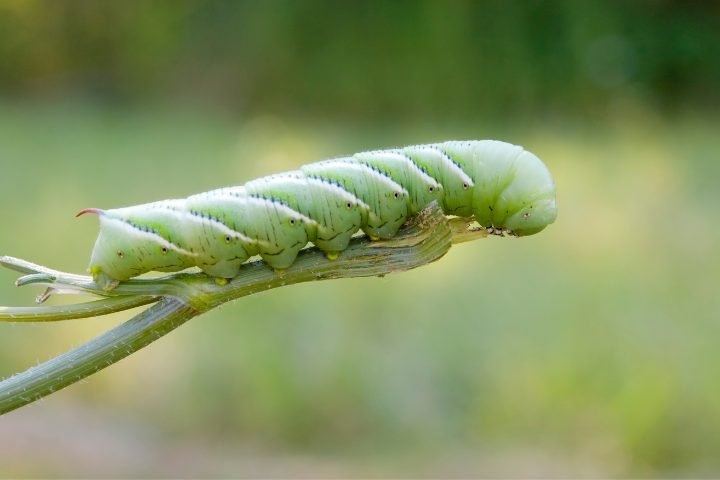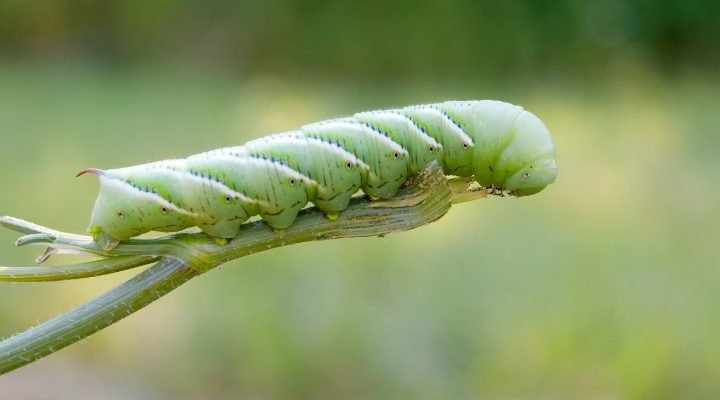
Imagine you’re at a café with a friend, discussing these fascinating creatures over a cup of coffee. You might liken hornworms to unwelcome guests who show up at a party. Sometimes they come back, and sometimes they don’t—it all depends on a few factors. In this article, we’ll dive into hornworms and their lifecycle to understand if they’re more like a seasonal trend or if they’ve got some staying power in your garden.
So, grab your favorite snack, and let’s get into it!
What Are Hornworms?
Hornworms, specifically the *Manduca sexta* species, are the larvae of the sphinx moth. They can grow up to four inches long, making them one of the largest caterpillars you’ll encounter. These green critters tend to blend seamlessly into the foliage, which makes spotting them a bit of a challenge. You may have seen them munching on tomatoes, peppers, or even tobacco plants.
Here’s the thing: While they seem to appear out of nowhere, hornworms don’t just pop into existence. They have an entire lifecycle that explains their occasional presence in your garden. Understanding this lifecycle can answer your question about whether they return year after year.
The Life Cycle of Hornworms
Hornworms go through a series of stages: egg, larva (caterpillar), pupa, and adult moth. It starts when female sphinx moths lay eggs on the undersides of leaves. These eggs hatch into tiny larvae within a week, and from there, they enter their most ravenous phase as caterpillars.
During this caterpillar stage, they can consume large amounts of plant material. They spend about two to three weeks in this stage, growing rapidly. Once they’ve had their fill, they pupate in the soil and eventually metamorphose into adult moths—ready to start the cycle again.
So, do hornworms come back? Well, it depends on how many eggs are laid and whether the conditions in your garden support their growth.
Factors That Influence Hornworm Populations
Several factors can determine whether hornworms return to your garden each year.
- Climate: Hornworms thrive in warm, humid conditions. If your region has mild winters, it’s more likely that hornworms will return.
- Plant Availability: If you grow a lot of their favorite plants—like tomatoes or peppers—they’ll find a buffet in your garden. Less availability means fewer hornworms.
- Pest Control: Natural predators like birds and parasitic wasps can help keep hornworm populations in check. Effective pest control can reduce their numbers significantly.
You might be wondering if there’s anything you can do to either encourage or discourage their return. It’s all about striking a balance between keeping your garden healthy and the natural lifecycle of hornworms.
How to Manage Hornworms in Your Garden
Dealing with hornworms can feel like a chore, but there are helpful strategies you can employ.
1. Regular Inspections: Check your plants, especially the undersides of leaves, for eggs or small caterpillars. The sooner you catch them, the less damage they can do.
2. Handpicking: If you find them, simply pick them off and dispose of them. It’s a simple method that can be quite effective.
3. Beneficial Insects: Introduce natural predators, like ladybugs and parasitic wasps, into your garden. They can help keep hornworm populations from exploding.
These methods can help keep hornworms at bay and may even reduce the likelihood of them returning year after year.
Do Hornworms Have Natural Predators?
Absolutely! In nature, hornworms have a variety of natural enemies that can help keep their numbers in check.
- Birds: Many birds love to snack on hornworms. Their bright color makes them easy targets for feathered friends.
- Wasps: Some wasps, like the braconid wasp, lay their eggs inside hornworms. When the larvae hatch, they eat the hornworm from the inside out. Yikes!
- Fungi and Bacteria: Certain pathogens can also infect hornworms, leading to their demise.
By encouraging these beneficial creatures, you can create a balanced ecosystem in your garden and help control any potential hornworm infestation.
Seasonal Trends of Hornworm Populations
Typically, hornworms are more prevalent during the warm months of summer. In some regions, they may begin making an appearance as early as spring, especially if the weather is warmer. You’ll usually see them in numbers during late summer when the conditions are optimal for their growth and reproduction.
That said, as summer turns to fall, hornworm sightings may decline. The adult moths will lay eggs, but as temperatures drop, the chances of those eggs surviving into the next year diminish.
So, if you’re noticing hornworms this summer, they might indeed come back next year—but the cycle of nature also means there’s no guarantee they’ll return in droves.
So, do hornworms come back year after year? The answer depends on several factors, from local climate to plant availability and pest control methods. Understanding the lifecycle of these fascinating caterpillars can give you insight into their return.
By implementing a few garden management strategies and encouraging natural predators, you can keep hornworms at bay while still enjoying the seasonal beauty of your plants. Remember, every garden is a unique ecosystem. With a little attention and care, you can help ensure that hornworms don’t become your unwelcome annual visitors!

